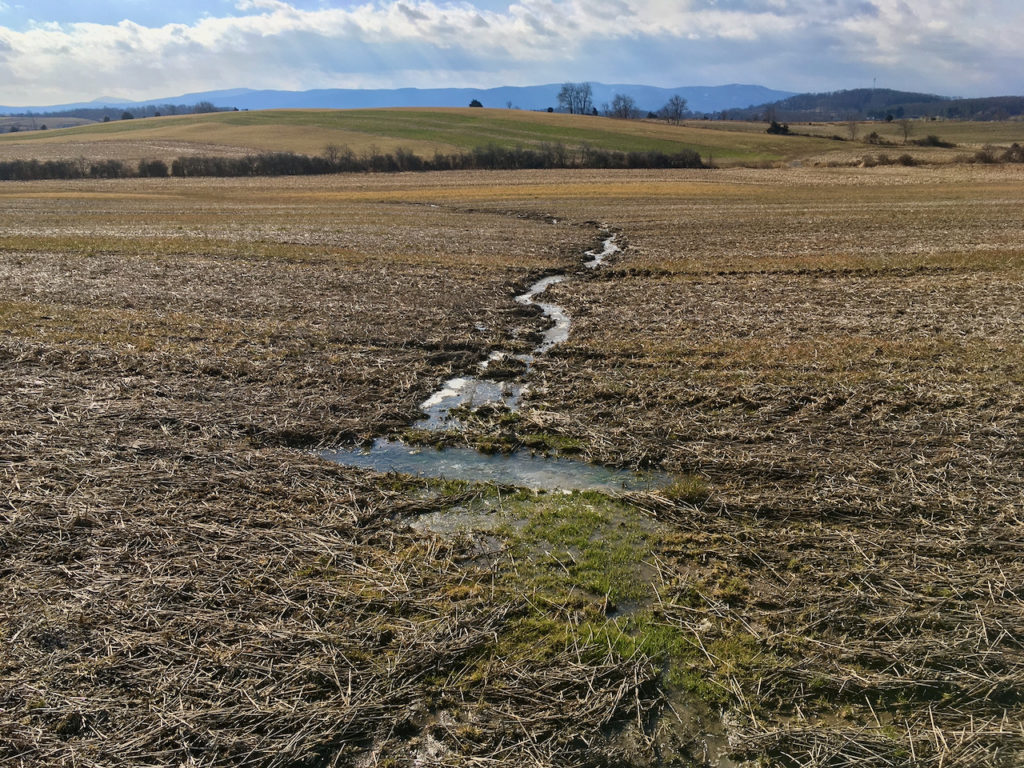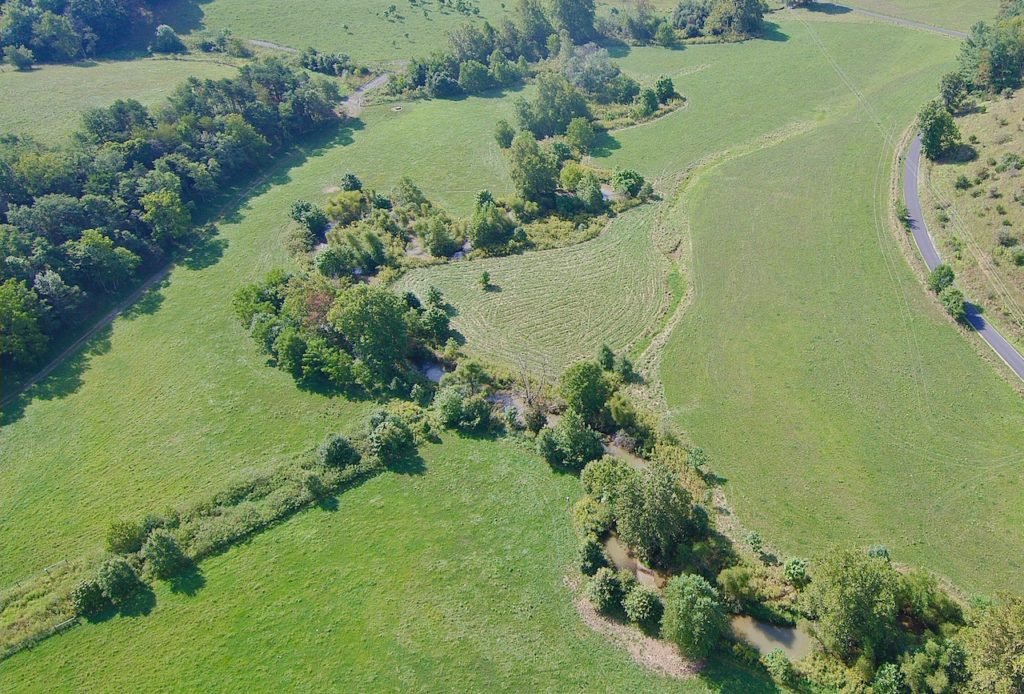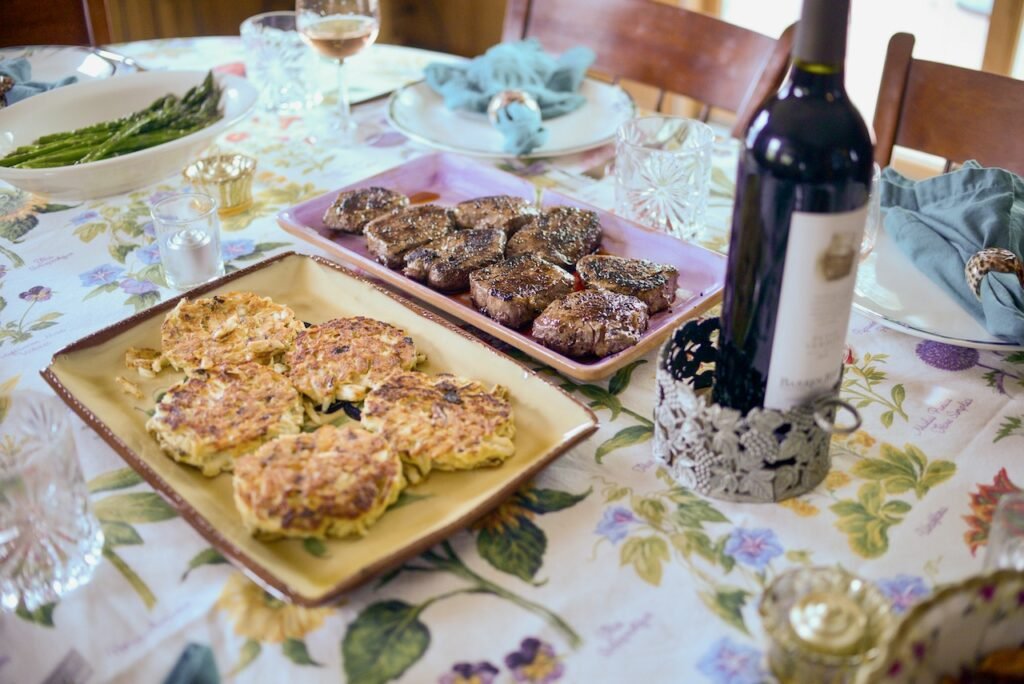Our farm in Virginia’s legendary Shenandoah Valley affects the waters of America’s largest estuary over three-hundred miles away—the Chesapeake Bay. How we manage our land profoundly and inextricably affects groundwater and surface water. In other words, our turf affects what’s in the surf.
Surf and Turf
It was a special occasion when Dan Knott* and his wife, Nichole, from Gloucester, Virginia, came to our farm to experience how we raise beef cattle. Dan is a waterman on the Chesapeake Bay. For dinner, he brought a bushel of world-famous Chesapeake blue crabs to serve with our all-natural, grass-fed beef.
Groundwater Filter
Rainwater has four fates. It can evaporate, become runoff, be absorbed by plant roots, or percolate through the soil into the groundwater. Let’s look at that last fate. When it rains, the trees and pastures on our farm intercept the energy of the falling raindrops so that the water gently soaks into the soil. That water then percolates down into the groundwater and eventually emerges into our streams and rivers. So in this example, the soil acts as a giant water filter.
Surface Water Filter
When the soil is saturated with water and can’t absorb more, water begins flowing downhill in sheets. The pasture vegetation helps slow the water down before it enters our riparian forest buffers. These strips of land with native trees are adjacent and parallel to streams, and they act as surface water filters. The overland flow of water entering these buffers is intercepted by vegetation and trees, which capture sediment and nutrients that may be suspended in the water before they enter the stream.
Soil Erosion
Any land not covered with vegetation is susceptible to the forces of erosion. Rain falling on the bare ground has an energy that dislodges soil particles. Once the overland flow of water succumbs to the forces of gravity and begins flowing downhill, it has additional energy to cut into the land. It causes soil particles to wash away, allowing small channels and gullies to form. The soil particles picked up by the flowing water are deposited somewhere downhill or carried farther into a stream. Soil erosion, from rainfall, is the detachment and transport of soil particles downhill.
Soil particles suspended in streams and rivers are massive pollutants mainly because it suffocates aquatic life, and perhaps even worse are the many things attached to those soil particles, such as nutrients and chemicals. These pollutants are responsible for algal blooms, dead zones, and fish kills.

Rain can cause gullies to form if the land is not well protected with vegetation. Photo credit R. Whitescarver
Ecosystem Services
So how we manage our farm profoundly affects the water quality in the streams. We have vegetation covering the land, which turns the soil into a giant filter for the groundwater, and the riparian forests next to the streams form a second filter. These are well-functioning ecosystem services that help produce clean water.
Imagine if all farms were managed in a way that produced clean water. There would be a lot more crabs and fish in the bay. One reason federal, state, and private programs have been put in place to help farmers provide these ecosystem services is because society as a whole benefits from good land use.
Best Management Practices
It’s pretty easy to prevent soil erosion from farmland. Keeping the soil covered with plants, planting on the contour, minimizing tillage, adding organic matter to the land, and stream-side fencing to exclude cattle are essential best management practices that prevent erosion and build soil health.
Surf and Turf
Having our watermen “neighbors” from over three-hundred miles downstream join us for a fabulous surf-and-turf dinner was a great way to celebrate the connection between our farm in the Shenandoah Valley and their boat on the Chesapeake Bay.
I love to eat crab: crab dip, crab imperial, soft-shell crab, crab cakes, steak Oscar, and crabs Benedict. When I eat crab, I think of where it came from and how the way we manage our land here in the headwaters of the Chesapeake Bay helps produce them.
Bobby’s recipe for crab cakes:
8 oz. Chesapeake blue crab
1 egg white
1 tsp. mayonnaise
5 spring onions, diced
Season to taste (salt, pepper, Old Bay, etc.)
1 tbsp. oil
Mix all ingredients except the crab until blended; add the crab and gently mix. Add the oil to a skillet and heat; when the oil starts smoking, add the mixture to the cooking rings to brown on both sides.
*The Alliance for the Chesapeake Bay arranged for Dan Knott and his wife Nichole to visit our farm in May to highlight the connection between land and water. Dan is a waterman and founder of Hold Fast, a non-profit organization supporting combat veterans.






24 Comments
Leave your reply.